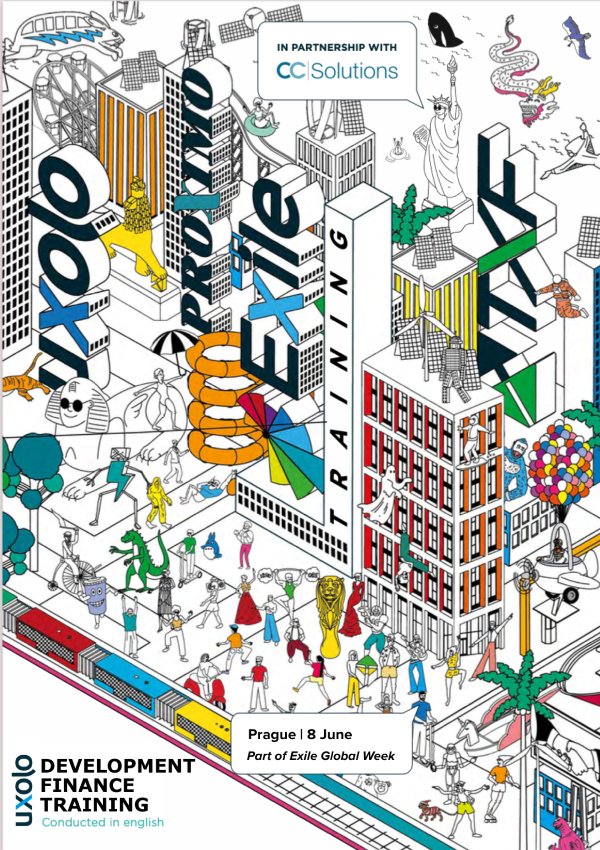Are emerging markets gaining from institutional investments in climate finance?
While asset managers and institutional investors are key to unlocking scalable private capital for climate action, emerging markets are lagging behind in institutional investments. That may change with the renewed focus on LNG spawned by energy security concerns over Russia and carbon sequestration.

While development finance institutions (DFIs) and commercial banks are committing big numbers to emerging markets climate finance projects in the renewables and infrastructure sectors, institutional investors – particularly pension funds – are largely making their contribution to combat climate change in the innovation and technology sectors in developed markets.
“Most of our clients are still not emerging market-focused,” observes John Tanyeri, head of infrastructure and project finance at Metlife, speaking at our recently concluded event, Uxolo Washington 2022: Mobilising Private Capital. “They would rather take more technology risk and duration risk in the developed countries and see fairly good returns, than take the incremental political credit risk that you would see in the emerging markets. When you look at our origination last year, which in total was about $5 billion, only $700 million was really done in the emerging market economies.”
JP Gibbons, senior director, sustainable and impact investing at Cambridge Associates (CA), has observed the same trend. In a survey conducted with CA’s clients, over 50% were interested in investing with impact, “but not all of that relates to emerging market impact, which was a surprise to me,” says Gibbons. “For the limited capital that our clients have, the alternative is great climate-based solutions in Silicon Valley that are regularly putting out 25% plus IRR.”
Earlier this year, Amsterdam-based fund management group ILX launched an emerging market focused private credit fund – ILX Fund I – that promises to answer the mobilisation question by offering attractive risk-adjusted returns (a key component of mobilising private capital) and a diverse portfolio, combined with ESG safeguarding and SDG and Climate focussed investments. While the promise is nothing new – the method is. The fund’s investment strategy includes selectively co-investing with a broad range of leading DFIs, providing investors with both the desired diversification and scale, and relying on the expertise and experience development banks have in the emerging markets. “We will complement that with our own assessments and our own independent data sources. Working that way allows us to build a very balanced portfolio across regions – from Latin America, Southeast Asia, Africa, Europe, Central Asia – and various sectors like renewable energy, infrastructure, agriculture and others,” says Elvira Eurlings, chief investment officer, ILX Fund.
While blended finance is often looked at as the solution to bring in institutional investors in the emerging markets, Gibbons believes that great blended finance structures, which have lucrative returns and first loss cap, do not necessarily work for institutional investors. “Institutional investors think of it as a long-term relationship,” says Gibbons. “They are going to invest in multiple vintages of a fund life, so they want to get comfortable with the fund manager and the team. They want to know what we think about their motivations and their incentives. So, by just addressing certain de-risking factors, we'll not get over other issues.”
Finding right solutions
Unlocking institutional investments for climate action is particularly challenging because institutional investors have a range of criteria and limitations which can be country specific and have illiquidity limits and specific rating requirements. “When you start to triangulate all of those requirements, the box gets a lot smaller. The bullseye is a lot more difficult at times to mobilise significant capital. It gets harder potentially without political support,” says Tanyeri. “There are certain countries that some of our clients will absolutely not invest in. There are also certain countries that they have been extremely interested in and invested in historically, but now they're pulling back from.” For instance, in Mexico, the government’s electricity reform has made long term investors pull out and re-evaluate the level of capital they will invest in the country. “These are things that happen not only in emerging economies. We are seeing it happen in other markets as well, and it is a constraint at times,” says Tanyeri.
Carbon sequestration is one area of investment under climate finance where emerging markets hold an edge over the developed economies, owing to lower costs when carried out on large scale. “Many of our clients are starting to think about their own carbon emissions and how they want to curtail it. We have a few clients now that have aggressive Net Zero strategies which are well before 2050. Those clients have some amount of carbon in their portfolio even after reducing it extensively. So, carbon sequestration strategies are the next alternative for those clients to push further,” says Gibbons. “There is significant opportunity in the emerging markets where carbon capture will eventually be creating carbon credits that don't cost $500 a credit. But right now, until the technology risk curve turns, the emerging markets space is where our clients want to achieve good carbon sequestration to support their own carbon budget. It's a place to play.”
Transition and impact in emerging markets
In the wake of global energy security concerns spawned by Russia’s invasion of Ukraine, insitutional investors are also looking with renewed appetite at LNG as a transition fuel – which could mean more insitutional investment flows into emerging markets.
Institutional investors do not always follow accepted transition energy norms.“For example, one of our clients will not finance or participate in combined cycle gas plants. These are gas plants that operate more 24/7, more baseload than you would expect. But this client will participate in peaking related assets – assets that turn on in August and September, when the consumer is turning on their air conditioners and peak load is just above your baseload. They will look at that as a transitional asset to potential renewables in the future,” says Tanyeri.
But President Putin’s war is aligning institutional investor attitudes to LNG. “About six months ago, there was a severe restriction on LNG investments. We have seen that change drastically,” says Tanyeri. “A number of our European clients have looked at the political risk and realised that LNG actually serves as an option to help potentially mitigate some of the political risks that we are seeing today. It's great to have an ESG friendly energy policy, but if you have someone militarily knocking on your door, not sure if it really matters much. When you look at our clients, we have about $3 billion in LNG and those are great investments. Yes, there's a carbon content to it. But it's half of that of coal. There is still a place for LNG and for natural gas, and energy security is extremely important as we're seeing today.”
The process of energy transition also raises concerns about its impact on the society and communities in the emerging markets. Often referred to as ‘just or fair transition’, some institutional investors and asset managers are paying closer attention to the disproportionate impact of transition on people in the emerging and poor economies. However, evaluating the impact of just transition in the emerging markets is particularly challenging. “Evaluating the impact in this area is not nearly as easy as to measure CO2 emissions but that's an area where you are not limiting your investment to venture capital in the Silicon Valley. Climate justice is an area where you can look more at emerging market opportunities,” says Gibbons. “It is very important that those who are managing the dollars and investing in these strategies are thinking about how they can do so, beyond just putting it on their marketing materials.”
We are offering virtual access to watch all sessions of Uxolo Washington 2022: Mobilising Private Capital on-demand. Simply reach out to us to request your access: marketing@uxolo.com





